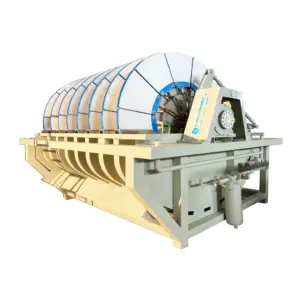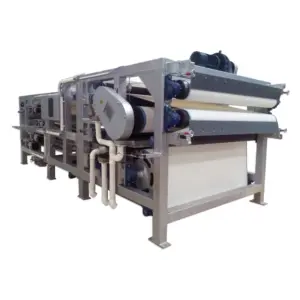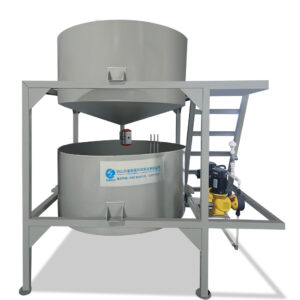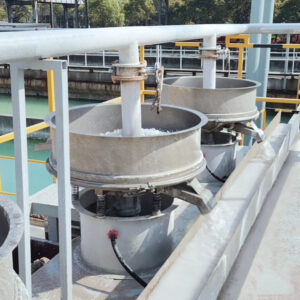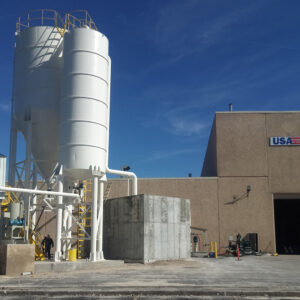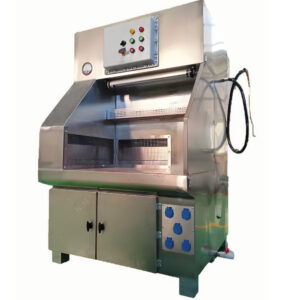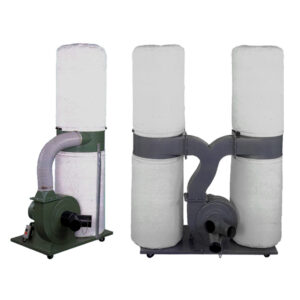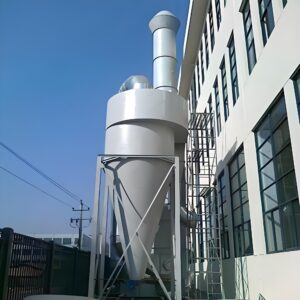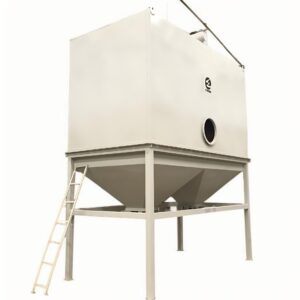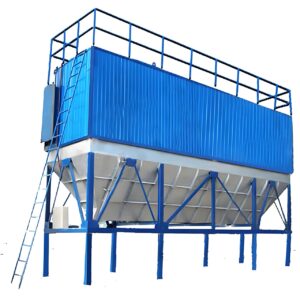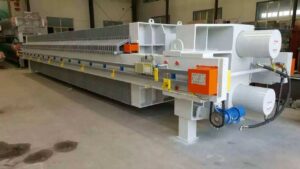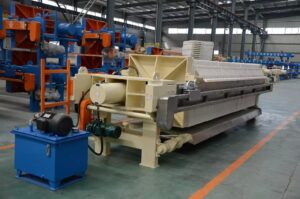The wastewater treatment industry has witnessed a significant shift toward alternative wastewater brands that offer competitive solutions without the premium pricing of established names. These manufacturers provide generic wastewater treatment solutions that meet industry standards while delivering substantial cost savings for facilities across various sectors.
Alternative brands have emerged as viable options due to technological standardization and improved manufacturing processes. Unlike the early days when proprietary systems dominated the market, today’s universal water treatment systems often share common components and operational principles. This standardization has enabled smaller manufacturers to produce equipment that matches the performance of premium brands while offering more flexible pricing structures.
The driving force behind this market evolution stems from increasing operational costs and tighter environmental regulations. Facilities need efficient treatment solutions that don’t strain their budgets, particularly in sectors like municipal water management and industrial processing. PORVOO Clean Tech represents this new generation of manufacturers, focusing on delivering proven technology at accessible price points.
Industry data shows that alternative brands now capture approximately 35% of the global wastewater treatment market, with growth accelerating at 8.2% annually. This expansion reflects not just cost considerations but also improved product quality and service capabilities among newer manufacturers.
Market Positioning and Competitive Landscape
The competitive landscape has shifted dramatically over the past decade. Traditional premium brands maintained market dominance through perceived reliability and comprehensive service networks. However, alternative manufacturers have addressed these concerns by investing heavily in quality control systems and developing robust support infrastructures.
Research from the Water Technology Research Institute indicates that performance gaps between premium and alternative brands have narrowed to less than 5% in most applications. This convergence has prompted facility managers to reconsider their procurement strategies, particularly for standard treatment applications where specialized features aren’t critical.
Technology Transfer and Innovation
Alternative brands benefit from technology transfer and expired patents that previously gave premium manufacturers competitive advantages. Manufacturing processes that were once proprietary have become industry standards, enabling smaller companies to produce comparable equipment using established methodologies.
How Do Generic Wastewater Treatment Solutions Compare to Premium Options
Generic wastewater treatment solutions offer compelling performance characteristics that challenge traditional assumptions about brand hierarchy. When evaluating these systems, the key lies in understanding where meaningful differences exist versus areas where premium pricing doesn’t translate to superior performance.
Performance testing conducted by the Environmental Technology Assessment Center reveals that generic systems achieve 94-97% treatment efficiency compared to 96-98% for premium brands in standard municipal applications. This 2-4% difference often reflects operational optimization rather than fundamental design limitations.
The most significant advantage of generic solutions lies in their compatible wastewater equipment design philosophy. These systems typically use standardized components that can be sourced from multiple suppliers, reducing long-term maintenance costs and eliminating vendor lock-in scenarios that plague proprietary systems.
| Performance Metric | Generic Systems | Premium Systems | Difference |
|---|---|---|---|
| Treatment Efficiency | 94-97% | 96-98% | 2-4% |
| Energy Consumption | 15-18 kWh/m³ | 14-16 kWh/m³ | 1-2 kWh/m³ |
| Maintenance Frequency | 3-4 months | 4-6 months | 1-2 months |
| Component Availability | Multi-source | Single-source | Significant |
Operational Reliability Considerations
While generic systems demonstrate comparable performance, operational reliability can vary significantly based on manufacturer quality control and component selection. Premium brands maintain strict supplier qualification programs and extensive testing protocols, whereas alternative manufacturers may have more variable quality management systems.
In our experience working with facilities across different sectors, the key differentiator isn’t brand name but rather the manufacturer’s commitment to consistent quality and responsive technical support. Some alternative brands exceed premium manufacturers in customer service responsiveness due to their more agile organizational structures.
Integration and Compatibility Factors
Generic systems often provide superior integration capabilities with existing infrastructure. Premium brands sometimes employ proprietary interfaces that complicate system upgrades or modifications, while alternative manufacturers typically embrace open standards that facilitate easier integration.
A 2023 study by Industrial Water Solutions found that facilities using generic systems experienced 23% lower integration costs when expanding or upgrading their treatment capacity. This advantage becomes particularly significant for facilities planning multi-phase development projects.
What Types of Universal Water Treatment Systems Are Available
Universal water treatment systems encompass a broad spectrum of technologies designed to address diverse treatment requirements across industries. These systems prioritize modular design and component interchangeability, making them attractive options for facilities seeking flexibility and cost-effectiveness.
Universal water treatment systems typically fall into four primary categories: biological treatment units, membrane filtration systems, chemical treatment platforms, and hybrid integrated solutions. Each category offers distinct advantages depending on specific application requirements and effluent characteristics.
Biological treatment systems represent the most mature segment of universal solutions. These systems utilize standardized reactor designs and proven microbial processes that can be optimized for various organic load conditions. Manufacturers like those offering comprehensive wastewater treatment solutions have developed modular biological systems that can be easily scaled or reconfigured based on changing facility needs.
Membrane-Based Universal Systems
Membrane technology has become increasingly standardized, with multiple manufacturers producing compatible membrane modules that can be integrated into various system configurations. This standardization has driven down costs while improving performance consistency across different suppliers.
The key advantage of universal membrane systems lies in their predictable performance characteristics and straightforward scaling capabilities. Facilities can start with basic configurations and add membrane modules as capacity requirements increase, without fundamentally altering the system architecture.
Technical specifications for universal membrane systems typically include:
- Operating pressure ranges: 0.5-2.5 bar for microfiltration, 2-10 bar for ultrafiltration
- Flux rates: 50-200 L/m²/hr depending on feed water characteristics
- Recovery rates: 85-95% for standard municipal applications
- Membrane lifespan: 3-7 years with proper maintenance
Chemical Treatment Platform Systems
Chemical treatment platforms offer the greatest flexibility in addressing varying water quality conditions. These systems use standardized dosing equipment and control systems that can accommodate different chemical treatment protocols without requiring major hardware modifications.
The modular approach enables facilities to adjust treatment intensity based on seasonal variations or changing discharge requirements. This flexibility proves particularly valuable for industrial facilities with variable production schedules or seasonal operations.
Hybrid Integrated Solutions
Hybrid systems combine multiple treatment technologies in integrated platforms designed for maximum efficiency and reliability. These systems typically incorporate biological treatment, membrane separation, and chemical polishing in coordinated process trains.
While more complex than single-technology solutions, hybrid systems offer superior treatment performance and greater operational stability. The integrated design reduces footprint requirements and simplifies control system management compared to separate treatment units.
How to Choose Compatible Wastewater Equipment for Your Facility
Selecting compatible wastewater equipment requires a systematic evaluation process that considers both immediate operational requirements and long-term facility development plans. The key is understanding how different system components interact and ensuring that equipment choices support rather than constrain future operational flexibility.
Compatible wastewater equipment selection begins with comprehensive characterization of your facility’s wastewater streams. This assessment should include flow rates, constituent concentrations, temporal variations, and anticipated future changes. Without this foundation, equipment selection becomes guesswork that often leads to suboptimal performance or costly modifications.
The compatibility evaluation process should prioritize standardized interfaces and proven integration protocols. Equipment that requires proprietary control systems or specialized maintenance procedures may offer short-term cost savings but typically results in higher lifecycle costs and operational constraints.
Flow Rate and Capacity Planning
Accurate flow rate assessment forms the foundation of equipment selection. Many facilities underestimate peak flow conditions or fail to account for future expansion requirements, leading to undersized systems that struggle during high-demand periods.
Industry best practices recommend designing systems for 125-150% of current peak capacity to accommodate operational variations and moderate growth. This overhead provides operational stability without excessive capital investment in unused capacity.
| System Component | Sizing Factor | Typical Range | Critical Considerations |
|---|---|---|---|
| Primary Treatment | 1.2-1.5x peak flow | 150-300% avg flow | Hydraulic loading limits |
| Biological Treatment | 1.1-1.3x peak flow | 120-180% avg flow | Organic loading capacity |
| Membrane Systems | 1.0-1.2x peak flow | 100-150% avg flow | Flux rate limitations |
| Chemical Systems | 1.3-1.8x peak flow | 150-250% avg flow | Mixing and contact time |
Control System Integration Requirements
Modern wastewater treatment relies heavily on automated control systems that coordinate multiple process components. Equipment selection should prioritize systems that support standard communication protocols and integrate seamlessly with existing facility infrastructure.
The most successful installations use equipment with open architecture control systems that can communicate with various monitoring and control platforms. This flexibility enables facilities to upgrade or modify control systems without replacing major process equipment.
Maintenance and Service Considerations
Long-term operational success depends heavily on maintenance accessibility and parts availability. Equipment that requires specialized tools or proprietary components creates operational vulnerabilities that can result in extended downtime during maintenance periods.
As noted by facility managers we’ve worked with, the most reliable systems use standard industrial components that can be sourced from multiple suppliers. This approach reduces maintenance costs and eliminates dependency on single suppliers for critical replacement parts.
What Are the Cost Benefits of Alternative Water Treatment Brands
The financial advantages of alternative water treatment brands extend beyond simple purchase price differences, encompassing reduced operational costs, improved maintenance economics, and enhanced system flexibility that delivers long-term value.
Capital cost savings typically range from 25-40% compared to premium brands for equivalent treatment capacity. However, the most significant financial benefits emerge over the system’s operational lifetime through reduced maintenance costs, improved parts availability, and enhanced upgrade flexibility.
A comprehensive cost analysis conducted by the Water Infrastructure Finance Authority found that facilities using alternative brands achieved 18-32% lower total cost of ownership over 15-year evaluation periods. These savings resulted from multiple factors including lower acquisition costs, reduced maintenance expenses, and improved operational efficiency.
Operational Cost Optimization
Alternative brands often design systems with operational cost optimization as a primary consideration. This focus results in equipment that consumes less energy, requires fewer chemical additives, and operates efficiently across broader flow ranges compared to premium alternatives.
Energy consumption represents the largest ongoing operational expense for most treatment facilities. Alternative manufacturers have invested heavily in energy-efficient designs that can reduce power consumption by 8-15% compared to older premium systems, translating to substantial long-term savings.
Case study: A municipal facility in the Pacific Northwest replaced aging premium equipment with modern alternative treatment systems and achieved 22% reduction in energy costs while improving treatment efficiency by 6%. The facility recovered its investment within 3.8 years through operational savings alone.
Maintenance Cost Advantages
The standardized component approach used by alternative brands significantly reduces maintenance costs and complexity. Facilities can source replacement parts from multiple suppliers, eliminating the premium pricing and delivery delays often associated with proprietary components.
Maintenance scheduling becomes more flexible when equipment uses standard industrial components. Facility maintenance staff can maintain inventory of common parts that serve multiple system components, reducing overall spare parts investment and storage requirements.
Financing and Procurement Benefits
Alternative brands typically offer more flexible financing options and procurement terms compared to premium manufacturers. This flexibility enables facilities to structure purchases that align with budget cycles and cash flow requirements.
The competitive nature of the alternative brand market has driven innovation in financing approaches, including performance-based contracts and lease-to-own arrangements that reduce upfront capital requirements while maintaining operational control.
How to Evaluate Performance Standards in Generic Treatment Systems
Performance evaluation of generic treatment systems requires understanding both technical specifications and operational characteristics that determine real-world effectiveness. The key lies in identifying meaningful performance metrics that correlate with long-term operational success rather than simply comparing specification sheets.
Generic wastewater treatment solutions must be evaluated using standardized testing protocols that provide objective performance comparisons. The most reliable evaluation approach combines manufacturer data with independent testing results and actual facility performance records.
Treatment efficiency represents the most critical performance metric, but it should be evaluated across varying operational conditions rather than just optimal design parameters. Systems that maintain consistent performance during peak loading, temperature variations, and upset conditions provide greater operational value than those that achieve maximum efficiency only under ideal circumstances.
Standardized Testing Protocols
The International Water Treatment Standards Organization has developed comprehensive testing protocols that enable objective comparison of different treatment systems. These protocols evaluate systems under standardized conditions that simulate real-world operational scenarios.
Key performance indicators include:
- Treatment efficiency across flow rate ranges (50-120% of design capacity)
- Energy consumption per unit of treated water
- Chemical consumption requirements
- Sludge production rates
- System recovery time following upset conditions
Independent testing facilities provide the most reliable performance data, as they eliminate manufacturer bias and employ standardized evaluation procedures. Facilities should prioritize systems with documented independent testing results over those relying solely on manufacturer claims.
Real-World Performance Validation
While laboratory testing provides valuable baseline data, real-world performance validation offers the most accurate assessment of system capabilities. This validation should include performance data from facilities with similar wastewater characteristics and operational requirements.
Industry research indicates that systems performing well across multiple installations typically maintain consistent performance in new applications. Conversely, systems with variable performance records often require extensive optimization to achieve design specifications.
Performance validation should examine:
- Consistent achievement of discharge permit requirements
- Operational stability during seasonal variations
- Maintenance requirements and related downtime
- System longevity and component replacement schedules
Long-Term Performance Trending
The most valuable performance evaluation examines long-term trending data that reveals how systems perform as they age and components wear. This analysis identifies systems that maintain stable performance over extended periods versus those that require increasing maintenance or experience declining efficiency.
Five-year performance data provides the most meaningful assessment of system reliability and operational costs. Systems that maintain consistent performance with predictable maintenance requirements offer superior long-term value compared to those with declining performance or increasing maintenance needs.
What Maintenance Requirements Come with Alternative Solutions
Maintenance requirements for alternative wastewater treatment solutions vary significantly based on system design philosophy and component selection. Understanding these requirements before installation enables facilities to plan appropriate maintenance programs and budget for ongoing operational costs.
Alternative water treatment brands typically emphasize maintenance simplicity and component accessibility in their design approach. This philosophy often results in systems that require more frequent routine maintenance but use simpler procedures that can be performed by facility staff rather than specialized technicians.
The maintenance approach for alternative systems generally follows predictive maintenance principles, where routine inspections and component monitoring prevent major failures rather than responding to breakdowns. This proactive approach can reduce overall maintenance costs while improving system reliability.
Routine Maintenance Schedules
Standard maintenance schedules for alternative systems typically include daily operational checks, weekly performance monitoring, monthly component inspections, and quarterly system optimization procedures. These schedules can be adjusted based on system utilization and operational conditions.
Daily maintenance tasks focus on operational parameters and basic system functionality:
- Flow rate and pressure monitoring
- Chemical dosing system verification
- Alarm system testing
- Visual inspection of major components
Weekly maintenance expands to include performance trending and minor adjustments:
- Treatment efficiency verification
- Energy consumption analysis
- Control system calibration checks
- Preventive component lubrication
| Maintenance Task | Frequency | Duration | Skill Level Required |
|---|---|---|---|
| Operational checks | Daily | 30-45 min | Basic operator |
| Performance monitoring | Weekly | 1-2 hours | Trained technician |
| Component inspection | Monthly | 2-4 hours | Skilled technician |
| System optimization | Quarterly | 4-8 hours | Specialist/contractor |
Component Replacement Planning
The standardized component approach used by alternative brands simplifies replacement planning and reduces inventory requirements. Facilities can maintain common spare parts that serve multiple system components, reducing overall inventory investment.
Component replacement planning should consider both predictable wear items and potential failure modes. Standardized components enable facilities to source replacements from multiple suppliers, ensuring availability and competitive pricing.
Critical spare parts inventory typically includes:
- Pump seals and impellers
- Membrane modules and gaskets
- Control system sensors and actuators
- Electrical components and wiring assemblies
Troubleshooting and Repair Procedures
Alternative systems often provide more accessible troubleshooting procedures and repair documentation compared to proprietary systems. This accessibility enables facility staff to resolve minor issues quickly without requiring specialized technical support.
The modular design philosophy used in many alternative systems facilitates component isolation and replacement. This approach minimizes system downtime during maintenance and enables facilities to maintain operational capacity during repair activities.
How to Navigate Compliance and Certification Issues
Regulatory compliance represents a critical consideration when selecting alternative wastewater treatment solutions. Understanding certification requirements and compliance pathways ensures that equipment selection supports rather than complicates permit maintenance and regulatory reporting.
Alternative water treatment brands must demonstrate compliance with the same regulatory standards as premium manufacturers. However, the certification process and documentation requirements can vary significantly between different manufacturers and regulatory jurisdictions.
The most important compliance consideration involves understanding how alternative systems maintain consistent performance under varying operational conditions. Regulatory agencies focus on reliable achievement of discharge standards rather than specific equipment brands or technologies.
Regulatory Approval Processes
Alternative systems must obtain appropriate regulatory approvals before installation in most jurisdictions. This approval process typically involves submitting detailed technical documentation, performance data, and operational procedures to regulatory agencies.
The approval process can be streamlined by selecting systems with existing regulatory approvals in similar applications. Manufacturers with comprehensive approval documentation can significantly reduce project timelines and approval costs.
Key regulatory considerations include:
- Discharge permit compatibility
- Environmental impact assessments
- Occupational safety requirements
- Emergency response procedures
Performance Monitoring and Reporting
Regulatory compliance requires consistent performance monitoring and regular reporting to appropriate agencies. Alternative systems must provide reliable monitoring capabilities that support regulatory reporting requirements.
Modern alternative systems typically include comprehensive monitoring and data logging capabilities that simplify regulatory reporting. These systems can generate automated reports that meet regulatory requirements while providing operational data for facility management.
As facilities evaluate comprehensive treatment solutions, they should prioritize systems with proven regulatory compliance records and robust monitoring capabilities. This approach ensures long-term operational success while minimizing regulatory risks.
The evolution toward alternative wastewater brands reflects broader industry trends toward standardization, cost optimization, and operational flexibility. These systems offer compelling advantages for facilities seeking efficient treatment solutions without premium pricing constraints. By carefully evaluating performance standards, maintenance requirements, and compliance considerations, facilities can implement alternative solutions that deliver reliable treatment performance while supporting long-term operational objectives.
Success with alternative brands depends on thorough evaluation, proper installation, and committed maintenance practices. Facilities that invest time in system selection and operational optimization typically achieve excellent results with significant cost savings compared to premium alternatives. The key lies in understanding that effective wastewater treatment depends more on proper system design and operation than on brand recognition or premium pricing.
Frequently Asked Questions
Q: What are Alternative Wastewater Brands | Generic Treatment Solutions?
A: Alternative Wastewater Brands | Generic Treatment Solutions refer to a range of non-conventional wastewater treatment products and systems designed to provide efficient, cost-effective, and environmentally friendly methods of treating residential or commercial wastewater. These solutions often include advanced septic systems, aerobic treatment units, sand filters, and biological processes that differ from traditional septic tanks by offering better treatment performance, reduced footprint, and compliance with modern environmental standards.
Q: How do Alternative Wastewater Brands differ from traditional septic systems?
A: Alternative Wastewater Brands typically offer enhanced treatment efficiency compared to traditional septic systems. They use advanced technologies such as aerobic bacteria treatment, sand filtration, or biodynamic processes to produce cleaner effluent. Benefits include:
- Higher pollutant removal rates
- Smaller system footprint suitable for limited space
- Reduced odors due to aerobic decomposition
- Capability to handle varying wastewater flow rates
However, these systems may require higher installation and maintenance costs, as well as more frequent inspections than conventional septic systems.
Q: What are the popular types of generic treatment solutions available for wastewater?
A: Some common generic treatment solutions within Alternative Wastewater Brands include:
- Aerobic Treatment Units (ATUs): Use oxygen to accelerate wastewater breakdown and reduce pathogens.
- Sand Filter Systems: Utilize natural filtration by pumping wastewater through sand layers.
- Biofiltration systems: Use microbes and natural processes to clean water efficiently.
- Anaerobic digestion: Converts organic waste into methane for energy recovery.
Each system has distinct pros and cons based on site conditions, maintenance needs, and treatment goals.
Q: What factors should be considered when choosing an Alternative Wastewater Brand or generic treatment solution?
A: Selecting the right solution depends on:
- Property size and soil permeability
- Local regulations and permits
- Type and volume of wastewater generated
- Budget for installation and ongoing maintenance
- Long-term performance and environmental impact
Consulting with certified wastewater professionals can help tailor a solution that meets both practical needs and environmental standards.
Q: Are Alternative Wastewater Brands more costly to maintain than traditional systems?
A: Generally, alternative systems may have higher initial installation costs and require more frequent inspections or maintenance because of their advanced components and technology. However, these costs are often balanced by improved wastewater treatment performance, compliance with stricter regulations, and potential savings from reduced leach field size or enhanced resource recovery.
Q: Can Alternative Wastewater Brands help with nutrient removal and environmental sustainability?
A: Yes, many generic treatment solutions are designed to address nutrient pollution by effectively removing nitrogen and phosphorus from wastewater, helping reduce toxic algal blooms and other water quality problems. Systems using biological treatment, algae, or worm-based digestion also contribute to sustainability by recovering beneficial byproducts such as bio-fertilizers or reducing greenhouse gas emissions. This makes such solutions increasingly important in eco-conscious wastewater management.
External Resources
- Alternative wastewater treatments for consumer-packaged goods – This article discusses innovative and scalable alternative wastewater treatment technologies, with a focus on bioelectrochemical systems suitable for challenging industrial waste streams.
- Comparison of Residential Wastewater Treatment Systems – This comprehensive resource compares different residential wastewater treatment brands and systems, highlighting energy efficiency, installation, cost, and certification standards.
- 6 Innovative Alternative Septic Systems Available Today – The page details various alternative wastewater and septic treatment solutions including aerobic units, peat biofilters, constructed wetlands, and their benefits.
- Solutions – Veolia Water Technologies – Veolia provides an overview of generic and alternative wastewater treatment solutions, including both aerobic and anaerobic technology options, as well as advanced filtration systems.
- Caustic Soda Replacement | Omya Water Treatment – Omya presents alternative mineral-based products as safer and more sustainable solutions for wastewater treatment, reducing the need for traditional chemicals.
- Alternative Onsite Wastewater Treatment Systems: An Overview – The EPA offers a broad overview of alternative and generic onsite wastewater treatment systems, including descriptions of various technologies and their appropriate applications.
